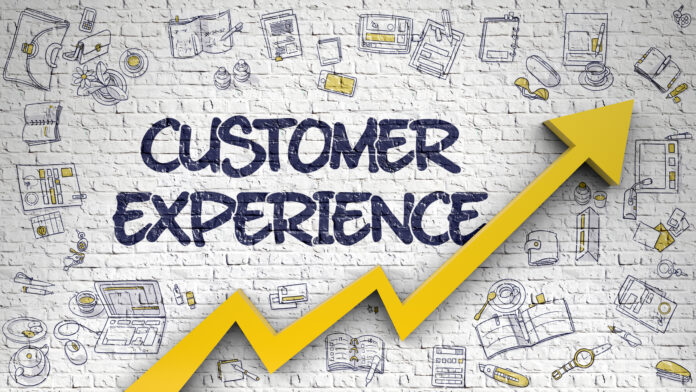
…listening to the Voice of the Customer is critical to growing your business
In my last piece, I talked about strategy and made ‘noise’ about its inevitability to achieve harmony in whatever we do as a business or organization. My goal was to highlight the importance of crafting a well-thought-out approach to delivering value to clients. Admittedly it can get a bit technical when you are seriously assessing the needs of your customers in order to proactively engage them to enhance the experience you envisage for them as a consequence of your understanding of their needs ‘outside-in’. In business terms, our efforts in this direction will lead us eventually to a business model, one we can communicate very clearly to every member of our team in a manner that achieves buy-in and spurs them on to outputs with tangible outcomes.
Jerry Gregoire, a former CIO at Dell once said: “Customer Experience is the next competitive battleground”. This is a reality today and organizations need to take this into account. To thrive in our chaotic and unsettling business environment (precipitated by unpredictable events such as covid19), organizations must seek to understand their customers more than ever before. This means in simple terms being intentional about how we relate with and engage our customers as they traverse our touchpoints.
The Erdem – Tavsan Customer Experience Model
In real terms, a model is ‘a thing used as an example to follow or imitate’, this could be a system or a procedure. The key is to move away from the approach that focuses on managing customer experience one piece at a time as it tends to become very daunting. By inference customer experience components do not fare well all by themselves, therefore having a dynamic overview of the entire process paves the way for the design of a successful and exceptional customer experience. The Erdem and Tavsan (2018) customer experience management model, presents us with a basis to identify the moving parts of customer experience and to relate them together for great effect. Four levels make up the building blocks of this model. These are the Cognizance, Response, Perception and Relationship levels. The Cognizance level is the first step in this process. It is the inception of the model and presents the starting point for a company desirous of understanding ‘which experiences customers pursue and why’. Truth be told if a brand is simply unsure of what is important to the customer it is trying to serve, they will fail woefully in trying to connect and will subsequently fall out of line in getting them to consider developing a relationship. What any business seeks at this level is to understand the ‘Voice of the Customer’ (VoC).
Voice of the Customer
The VoC is the process of capturing customer’s experiences, expectations, preferences and aversions through a detailed assessment of the wants and needs of the customer using both quantitative and qualitative research methods. Wyndham Destinations Asia Pacific, a vacation programmes provider, use a tailored hub to support its customer experience team to find the true voice of their customers and inspire customer-led transformation programmes. By capturing feedback from their touchpoints throughout the customer journey, they are able to uncover insights so that management could make smarter decisions and respond quickly to issues. The next level in the model is the response level, which is the capability of a company to close the ‘experiential gap’. This is the disconnect between the company’s understanding of the customer based on their own internal perspective and what the customer is actually feeling, thinking or doing. The ideal situation here is for the offering at any of the touchpoints to integrate with the customer’s viewpoint. In real terms, this may not be exact however companies need to work hard to ensure that this gap is as narrow as possible.
To orchestrate an ideal response to the customer 3 functions are key here. These are organizational competence, the skilled human capital responsible for delivering intended experiences to the customer; the organizational climate is about creating the conditions or atmosphere in the workplace to influence correct responses to the VoC. The final ‘spoke in this wheel’ is the operational reciprocity focusing on the capabilities of production, operations, processes and channels which the company uses in delivering designed experiences to customers. These Response elements are ones we must harmonize to properly respond and engage the voice of the customer. This underscores the need to focus more on integration as opposed to working in silos as the panacea for improving our response to the needs of the customer.
At the Perception level, the focus is on how customers perceive the brand. While some seek functionality in a brand others seek emotional attachments. What do Apple and Samsung have in common? The Apple experience is to satisfy their loyalists by putting more people than they need into their stores. What Apple cares about is providing a user experience that is company-focused, even if that means turning off a certain kind of consumer, Apple loyalists are doggedly attached to the brand and do not intend to go anywhere soon. Samsung, on the other hand, wants to get their phones in the hands of as many consumers. It is about allowing the consumer to choose the experience that is right for them. The irony here is that each approach has its ups and downs. However, each approach has resulted in tremendous global success for both companies! Companies must necessarily be aware of the values of their products or service ignite in customers.
Building relationships
The relationship level depicts the nature of bonds between customers and the company. This may be influenced indirectly by advertisements, referral by friends and colleagues or online contacts. Note that even the most satisfied customers can defect. Consumers develop relationships depending on their consumption experience. Bonds that develop between the customer and the brand are interpreted by companies as proof of loyalty. It can be both attitudinal (the state of mind that causes a customer to lean towards the repurchase of a product or service) and behavioural (the act of repurchasing regardless of the customer’s attitude). Customers develop loyalty or disloyalty from buying, using or disposing a product, different emotional responses are at play a process that leads ultimately to loyalty towards a certain brand. Studies have shown in B2B markets that up to 65-85% of defectors were satisfied or very satisfied with their former supplier. When Virgin launched its upper-class it captured swathes of British Airways first-class passengers. While BA used Customer Satisfaction Index (CSI) feedback to determine customer loyalty, by listening to their customers Virgin changed the rules of the game – cars to airport, quick check-in, bars, lounges, massages and so on.
Being close to your customers is an imperative act that must not be glossed over. The advantage of using a structured method to elicit our customer’s mood and positioning with regard to our brand, iteratively, is that we are consistently taking time to find out what they enjoy experiencing. This is what the experts say, by listening to the customer at your touchpoints e.g. product websites and social media as they share what is important to them and their feelings about your offerings, your company and your competitors, you learn very valuable lessons from them that will help you close the ‘experiential gap’.
The importance of listening to the VoC
By collecting the VoC accurately, you empower your business with first-hand information on how the customer generally feels about your product or service. This is a vital tool that will potentially enhance your competitiveness, by better understanding your customers you will be well-placed to make informed decisions that align with their needs. According to a research by Forrester, improving customer experience can be massively worthwhile citing that mass-market auto manufacturers through improved customer experience by the slightest margin lead to more than $1bn in additional revenue. According to McKinsey, ‘A fundamental organizational change of mindset that focuses on the customer, along with operational and IT improvements, can generate a 20% to 30% uplift in customer satisfaction and a 10% to 20% improvement in employee satisfaction’. Making use of customer information with the benefit of technology has limitless benefits.
By applying a range of information gathering techniques from focus groups, ethnographic techniques coupled with some form of an interview to gather the information you will mine a rich store of information highlighting customer insights to help make informed decisions. I can personally attest to this, a few years ago I had the privilege of participating in a focus group study to assess the appetite for a poultry product, to determine the general appetite and its price competitiveness with existing known products. The discovery was phenomenal, we realized that demand exceeded supply and that if we could turn things around by boosting supply we would be in good stead to tap into a hoard of interested international buyers. VoC programmes have been proven to help companies retain customers, deliver improved service and understand customer experience better in order to drive change.

The Writer is the Managing Consultant at Capability Trust Limited a People and Learning Organisation serving the market with Talent Acquisition and Management, Leadership Development, HR Outsourcing and General HR Advisory, Training and consulting services. He can be reached on 059 175 7205, [email protected]/ www.linkedin.com/in/km-13b85717









